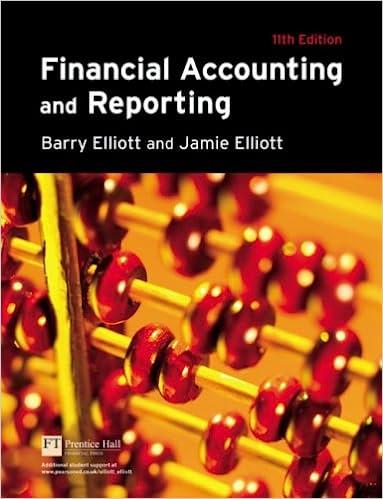Question
Use the Target Corporations Form 10-K to complete the case. You will be working with Targets FY 2012 (year ended February 2, 2013). Targets Form
Use the Target Corporations Form 10-K to complete the case. You will be working with Targets FY 2012 (year ended February 2, 2013). Targets Form 10-K is available on the companys website or through the SECs EDGAR database. Appendix A in your text provides instructions for using the EDGAR database.
Questions 31 - 51 are presented below. show all support for your work. You will be using the following sections of the annual report: MD&A, consolidated financial statements and notes to the financial statements.
31. Using Excel, compute common-size income statements (vertical analysis) for 2012 and 2011. In common-size income statements, net sales is 100% and every other number is a percentage of sales (you can stop at net earnings). 32. Using the common-size (vertical) income statements, identify the significant trends.
33. Using Excel, compute common-size (vertical analysis) balance sheets at the end of fiscal 2012 and 2011. In common-size balance sheets, total assets is 100% and every other number is a percentage of total assets. Be sure to complete the entire balance sheet.
34. Using the common-size (vertical) balance sheet, identify the significant trends.
35. Using Excel, prepare a horizontal analysis of the income statement comparing 2012 and 2011 (you can stop at net earnings).
36. Using the horizontal analysis of the income statement, identify the significant trends.
37. Using Excel, prepare a horizontal analysis of the balance sheet comparing 2012 and 2011.
38. Using the horizontal analysis of the balance sheet, identify the significant trends.
For numbers 39-51, calculate the following ratios for 2012 and 2011 **AND analyze the results.
39. Net margin
40. Return on investment
41. Return on equity
42. Earnings per share
43. Price-earnings ratio
44. Book value per share of common stock
45. Working capital
46. Current ratio
47. Quick (acid-test) ratio
48. Accounts receivable turnover
49. Inventory turnover
50. Debt to equity ratio
51. Debt to assets ratio








Step by Step Solution
There are 3 Steps involved in it
Step: 1

Get Instant Access to Expert-Tailored Solutions
See step-by-step solutions with expert insights and AI powered tools for academic success
Step: 2

Step: 3

Ace Your Homework with AI
Get the answers you need in no time with our AI-driven, step-by-step assistance
Get Started


